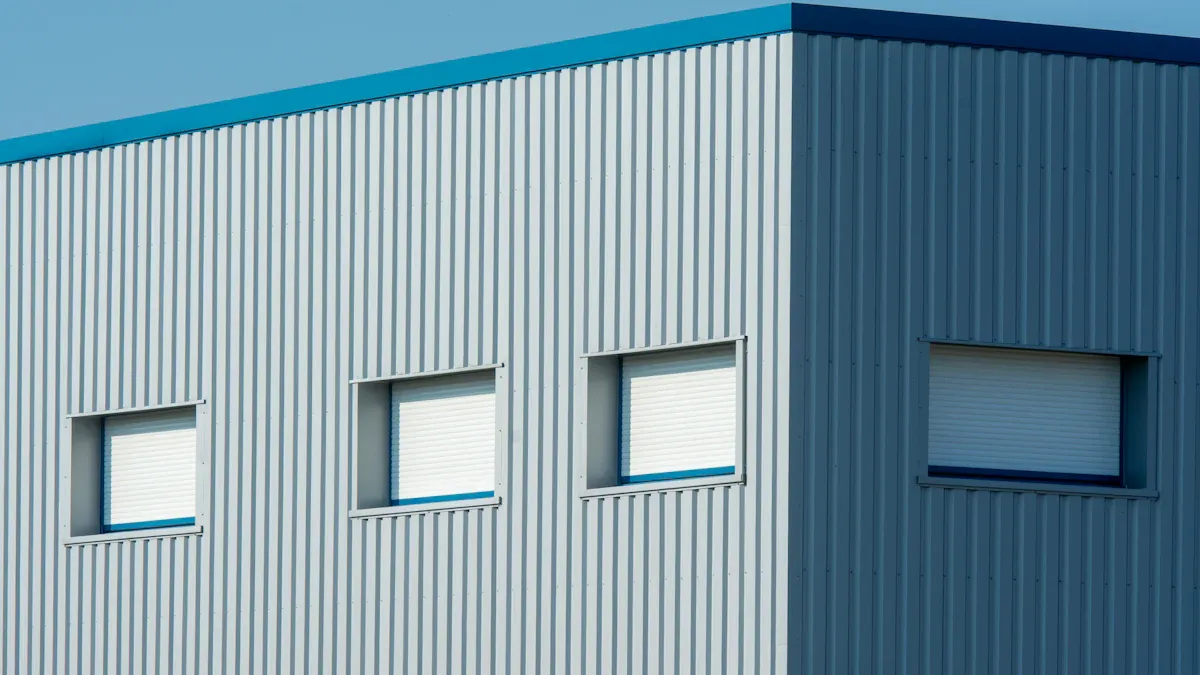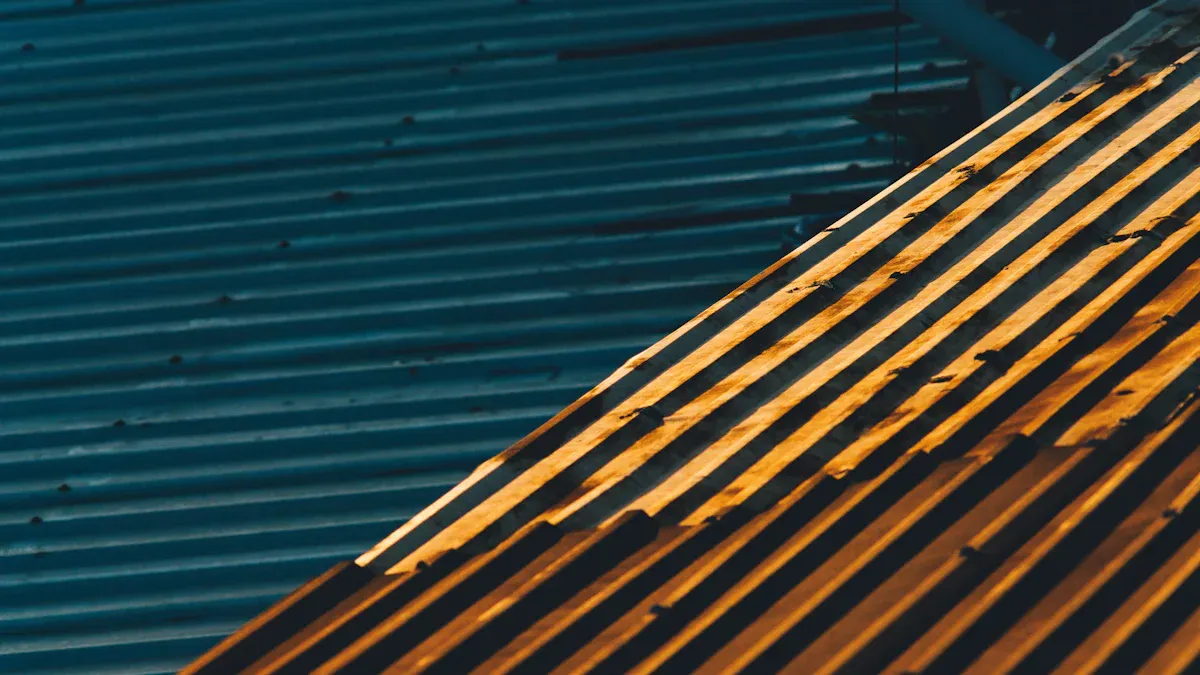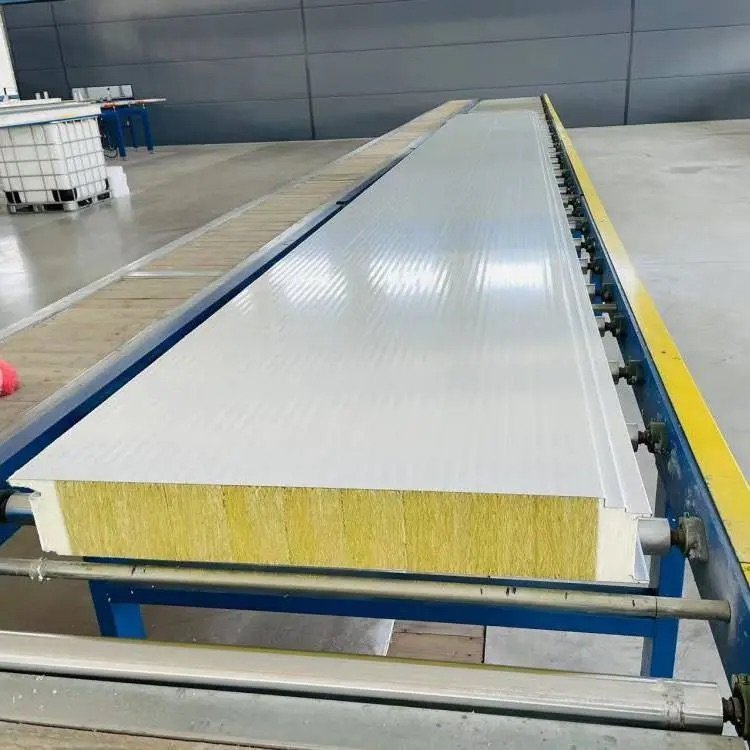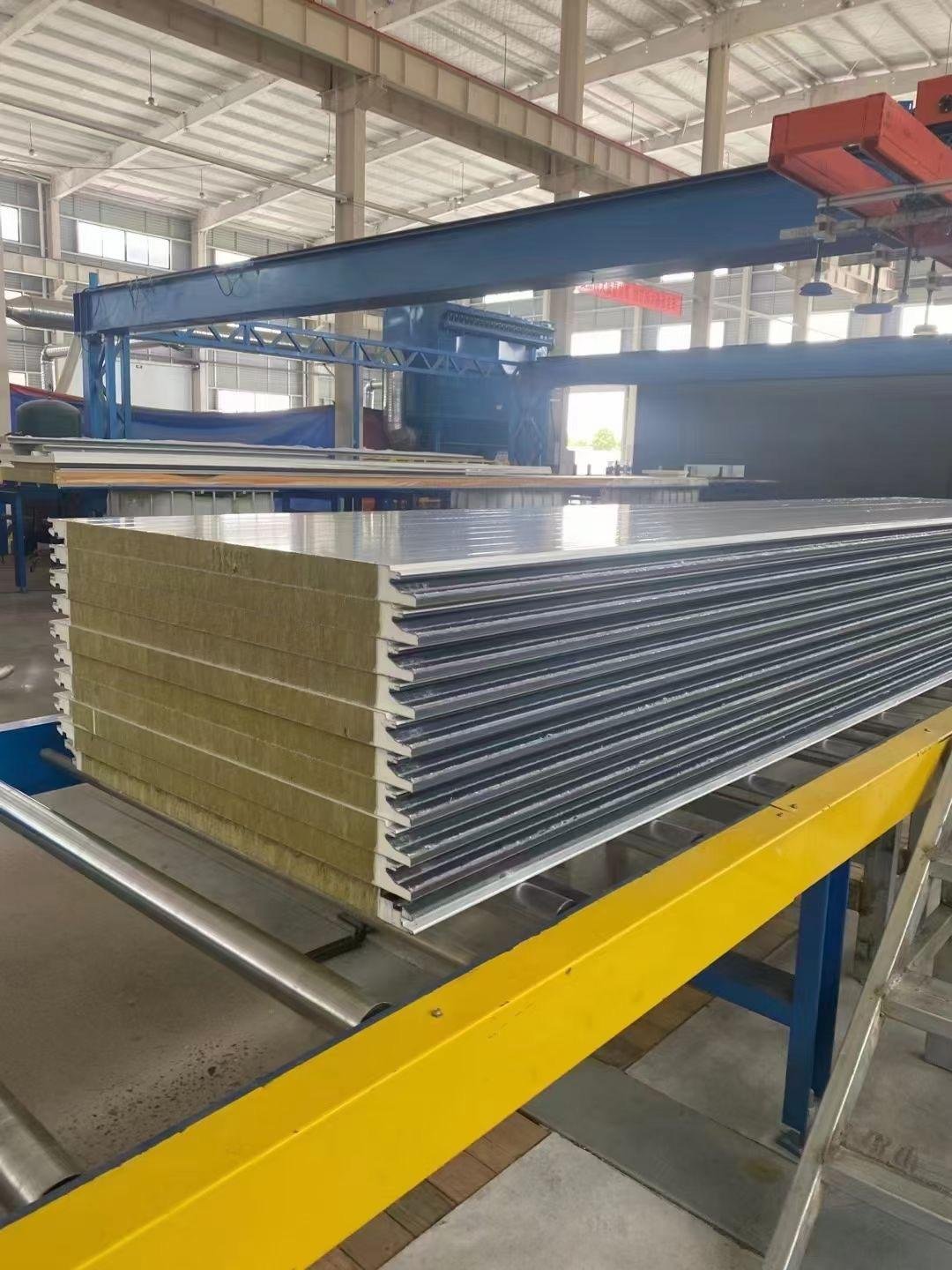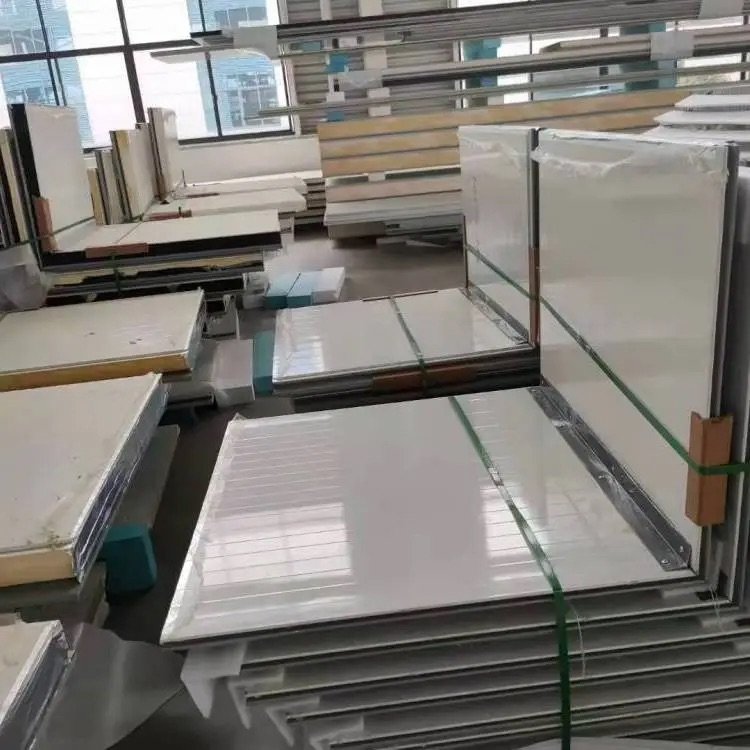Rockwool sandwich panels are important in modern building design. They help save energy by keeping indoor temperatures steady at 28-32 ºC in summer. These panels also support sustainability, with their market growing from USD 1.2 billion in 2023 to USD 2.3 billion by 2032. They block noise up to 40 dBA, making indoor spaces quieter. Implementing effective design tips during installation can enhance these benefits while also ensuring a visually appealing exterior.
Key Takeaways
Rockwool panels help save energy, cutting costs by $1.50–$2.00 per square foot yearly.
These panels are fireproof, making them great for areas with fire risks.
They reduce noise by up to 40 dBA, keeping indoor spaces quieter near busy roads.
You can pick panel sizes and colors to make your building look unique and attractive.
Cleaning and checking for damage regularly keeps your panels working well and lasting longer.
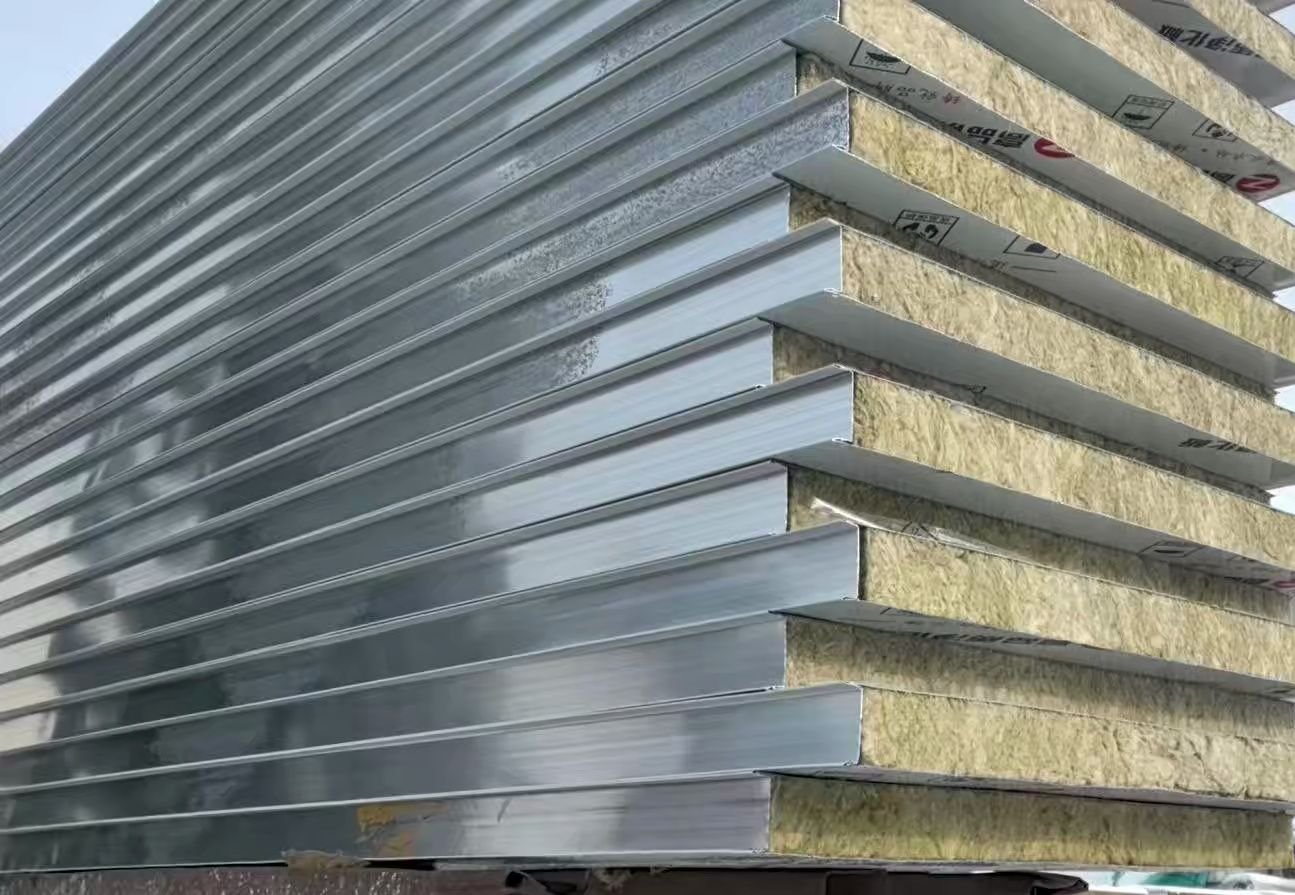
Key Benefits of Rockwool Sandwich Panels
Energy Efficiency and Thermal Performance
Rockwool sandwich panels help keep indoor temperatures steady. This reduces the need for extra heating or cooling. Their low thermal conductivity, between 0.033 and 0.046 W/m·K, provides great insulation. They are 30% better than expanded polystyrene (EPS). This means you can save $1.50–$2.00 per square foot on energy costs each year.
These panels have a high R-value, which lowers heat loss. Their density also boosts insulation by adding thermal mass. This makes them perfect for fixing older buildings to save energy. For example, 41% of homes in Germany’s KfW Efficiency House Program used Rockwool panels in 2022, compared to 27% in 2019. By using these panels, you support the $280 billion market for energy-saving upgrades and save money over time.
Tip: Use thicker panels in cold areas to save more energy.
Fire Safety and Resistance
Rockwool sandwich panels are very safe in fires. They are rated A1 or A2, meaning they don’t burn easily. These panels stay strong even in extreme heat, proven by REI (n) fire tests. This ensures they keep their structure, block flames, and insulate during a fire.
From 2021 to 2023, their use grew by 19% in fire-risk areas. They can handle high heat without releasing harmful gases, adding extra safety. Adding these panels to your building design improves fire resistance and meets strict safety rules.
Acoustic Comfort and Soundproofing
City noise can be annoying and stressful. Rockwool sandwich panels block noise up to 40 dBA. Their thick core absorbs sound, making indoor spaces quieter and more peaceful. Special tests have improved their soundproofing to meet top standards.
More people now know how noise affects health, so these panels are used more in homes and offices. If your building is near loud streets or busy areas, Rockwool panels can make it much quieter.
Note: For the best soundproofing, pair Rockwool panels with other sound-blocking materials.
Durability and Longevity
Rockwool sandwich panels are strong and last a long time. They keep their shape and insulation ability for years. Unlike other materials, Rockwool doesn’t sag or wear out. It stays effective for decades.
Tip: Pick Rockwool panels for projects needing low upkeep and long use.
Rockwool’s inorganic makeup stops rot, mold, and pests. This keeps it working well for thermal and sound benefits. It is chemically stable, so it doesn’t react with other materials or release bad gases. These panels are built to last forever, cutting down on repairs and replacements.
Durability Feature | Details |
|---|---|
Keeps Shape | Rockwool holds its form and works well over time. |
R-value Stays Strong | Its R-value doesn’t drop, keeping insulation effective. |
No Rot or Mold | Inorganic material avoids damage from rot, mold, or pests. |
Chemically Safe | It doesn’t react with materials or give off harmful gases. |
Built to Last | Designed for long-term use, saving on repairs and replacements. |
Choosing Rockwool panels means getting insulation that works well and saves money over time.
Sustainability and Environmental Impact
Rockwool sandwich panels are great for eco-friendly building. They stop heat loss, save energy, and lower carbon footprints. These panels improve comfort and reduce noise, helping the environment.
Made from volcanic rock, Rockwool is safe and doesn’t harm nature. Studies show Rockwool supports green technology and can even help create carbon-negative buildings. Its insulation makes it energy-efficient, perfect for sustainable projects.
Note: Using Rockwool panels helps the planet and supports green goals.
Adding Rockwool panels to your design creates energy-saving, eco-friendly buildings. These panels show care for the planet while meeting your long-term needs.
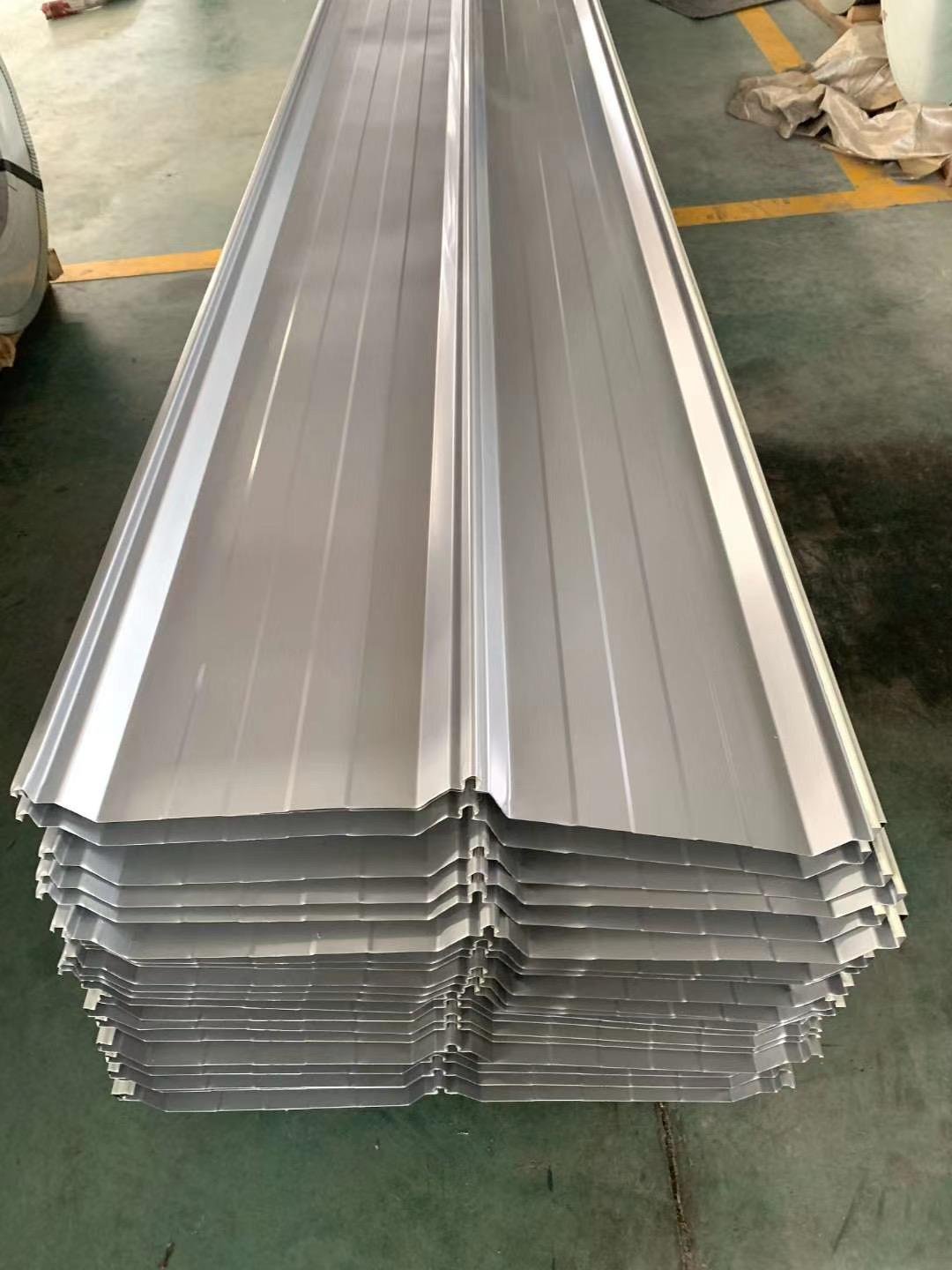
Aesthetic Design Tips for Façades
Exploring Color and Finish Options
Rockwool sandwich panels come in many colors and finishes. You can design façades that look amazing. Choose bright colors for bold designs or soft tones for simple looks. These panels also have matte, glossy, or textured finishes. This helps you create unique styles for any project.
Think about the building’s purpose and location when picking colors. Warm colors make homes feel cozy. Metallic finishes are great for modern offices. Use different colors to highlight parts of the design. This adds depth and makes the façade stand out.
Tip: Pick UV-resistant finishes to keep colors looking fresh.
Customizing Panel Sizes and Shapes
You can adjust Rockwool sandwich panels to fit your design ideas. Custom sizes make façades look better and work well. Panels can be cut to fit perfectly into your project.
Feature | Description |
|---|---|
Use strong materials to avoid damage from sunlight or moisture. | |
Panels can be resized to match your design needs. | |
Installation Methods | Different anchoring systems work for various building types. |
Durability | Panels resist UV rays, stains, and moisture, staying nice over time. |
Aesthetic Versatility | Many colors and finishes let you create unique designs. |
Customizing panel shapes lets you make cool patterns or designs. This improves how the façade looks.
Combining Materials for Unique Designs
Mixing Rockwool panels with other materials creates creative façades. For example, Bornholm Hospital used Rockwool with lightweight cladding. This made a strong, self-cleaning façade that saves energy.
Another example is a building in Pamplona. It combined Rockwool panels with aluminum profiles and Dekton slabs. This mix looked great and worked well. It showed how flexible Rockwool panels can be.
By mixing materials, you can use their strengths. This makes façades that look good and work efficiently.
Achieving Modern and Minimalist Aesthetics
Rockwool sandwich panels are great for simple, modern façades. Their smooth look and even surface suit today’s building styles. These panels help create designs that are both stylish and practical.
To make a minimalist façade, use straight lines and shapes. Rockwool panels can be adjusted to match these ideas. Pick neutral colors like white, gray, or black for a neat look. For a bold touch, mix the panels with glass or metal. This adds contrast but keeps the design simple.
Tip: Choose panels with hidden fasteners for a seamless appearance.
Lighting is key for minimalist designs. Add LED strips or hidden lights to show off the panels’ texture. This makes the design interesting without being too much. Matte finishes are also good for reducing glare and giving a soft, classy look.
In modern designs, less is better. Skip extra decorations or busy patterns. Let the Rockwool panels’ natural beauty stand out. They are strong and need little care, making them perfect for simple designs. Your façade will stay stylish and last for years.
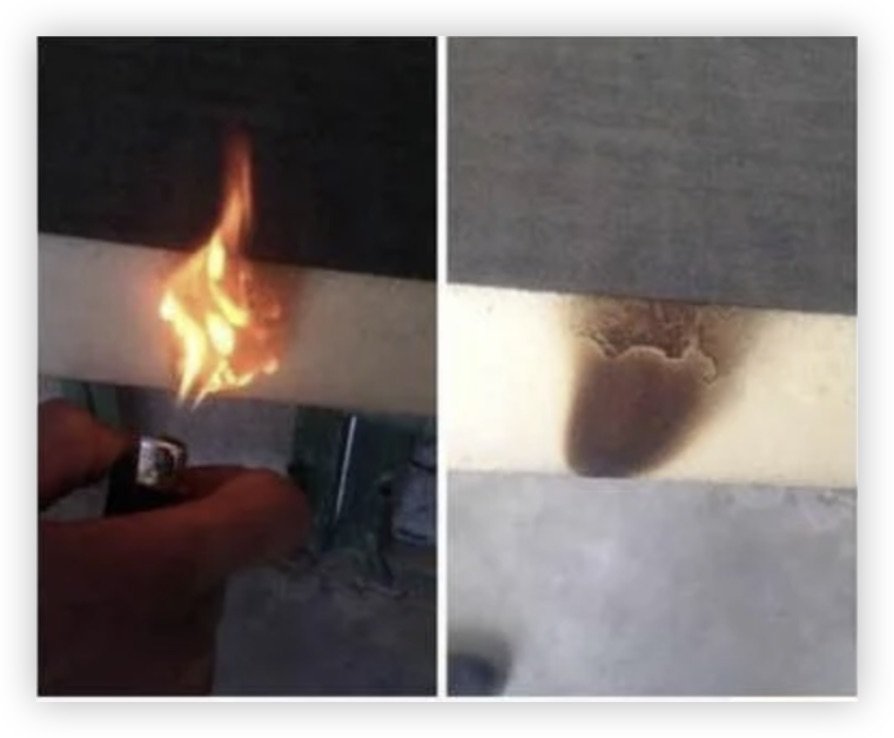
Technical Considerations for Optimal Performance
Ensuring Structural Support and Load-Bearing Capacity
Rockwool sandwich panels are strong but need proper support. Their load-bearing capacity must be checked before installation. Humidity can make these panels heavier by absorbing water. This extra weight might affect the building’s stability, especially for large roofs or walls.
Moisture can also make the panels expand and change shape. This might cause bending or uneven surfaces, which can ruin the building’s look. To stop this, keep the panels dry during installation. Use seals and coatings to protect them from moisture and keep them sturdy.
Tip: Work with a structural engineer to ensure the panels meet your project’s needs.
Addressing Thermal Bridging for Energy Efficiency
Thermal bridging happens when heat escapes through weak spots in insulation. Rockwool sandwich panels help stop this by providing even insulation. Their dense core keeps heat inside and saves energy.
For the best results, install the panels without gaps or misalignments. Add extra insulation or thermal breaks at joints to block heat transfer. This improves energy savings and keeps indoor spaces comfortable.
Note: Correct installation is crucial for Rockwool panels to save energy effectively.
Managing Moisture and Vapor Control
Controlling moisture is key to keeping Rockwool panels working well. The stone wool inside these panels naturally resists water and mold. For instance, a project in Austin, Texas, used airtight wraps with stone wool to save energy.
To handle moisture, use vapor barriers or breathable layers during setup. These materials let water vapor escape but stop moisture from getting in. In damp areas like basements, hybrid walls with extra insulation can offer better protection.
Tip: Check the panels often to ensure they stay dry and undamaged.
Meeting Building Codes and Standards
When using Rockwool sandwich panels, follow building codes and rules. These rules ensure safety, save energy, and protect the environment. By following them, you can build safe and eco-friendly structures.
Rockwool panels are great for fire safety, energy savings, and green certifications. They don’t burn, making them safe for fire-risk areas. After the Grenfell Tower fire, stricter fire rules were made worldwide. Rockwool panels meet these new rules, giving you confidence in your projects.
Saving energy is also very important. New building rules require materials that lower energy use. Rockwool panels provide great insulation to help with this. They also support global green goals like the Paris Agreement and EU Green Deal.
Here’s how Rockwool panels help meet key rules:
Compliance Aspect | Details |
|---|---|
Fire Safety | Non-combustible panels improve safety, especially after Grenfell Tower fire. |
Energy Efficiency | Helps meet strict energy-saving rules as regulations change. |
Green Building Standards | Works with LEED, BREEAM, and Passive House standards for eco-friendly buildings. |
Global Policies | Matches goals of the Paris Agreement and EU Green Deal for sustainable construction. |
Tip: Check local building rules before installing to meet all requirements.
Choosing Rockwool panels makes it easier to follow these rules. Their flexibility and global compliance make them perfect for modern buildings.

Best Practices for Installation
Preparing the Substructure for Installation
A strong base is key for a good panel setup. Check the surface where panels will go. It must be clean, flat, and free of dirt. Uneven spots can make panels fit poorly and work less effectively.
Use sturdy materials that hold the panels’ weight and resist weather. Steel or aluminum frames are great choices for most projects. Make sure the base meets the right R-values for your area. In cold places, aim for R-38 to R-60 to save energy and lower heating costs.
Tip: Ask a structural engineer to confirm the base can hold the panels.
Aligning and Sealing Panels Correctly
Good alignment and sealing make installation faster and better. Follow these steps for the best results:
Carefully move panels to the site to avoid damage.
Use suction tools to hold panels steady for exact placement.
Attach panels with screws or brackets provided by the manufacturer.
Seal the joints with the recommended sealant to stop air and water leaks.
Proper alignment helps panels fit perfectly, while sealing improves insulation. Rockwool sandwich panels block more noise than regular materials if installed correctly.
Note: Check alignment twice before sealing to avoid gaps or overlaps.
Proper Handling and Storage of Panels
Handle and store panels carefully to keep them working well. Store panels in a dry, covered spot to stop moisture from ruining them. Wet panels lose their insulating power and may weaken.
Don’t drag panels on rough surfaces, as this can harm their edges or finish. Use forklifts or cranes for big panels to avoid bending or damage.
Tip: Look for damage before installing to ensure panels last a long time.
By following these steps, your panel installation will be strong and effective.
Maintenance Tips for Long-Term Efficiency
Taking care of Rockwool sandwich panels keeps them working well for years. Follow these easy steps to keep them in great shape and lasting longer.
1. Regular Cleaning
Dust and dirt can build up on panels over time. Clean them often to keep them looking good and avoid damage. Use a soft brush or low-pressure water spray to remove dirt. Don’t use strong chemicals that might harm the surface.
Tip: Clean panels twice a year, especially in polluted or coastal areas.
2. Check for Damage
Look at your panels regularly for dents, scratches, or loose parts. Fixing small problems early stops them from getting worse.
Check for cracks or gaps in the seals.
Make sure fasteners are tight and not rusty.
Look at edges for signs of water damage.
Note: Replace broken panels quickly to keep insulation and strength.
3. Keep Moisture Away
Even though Rockwool panels resist water, too much moisture can hurt them. Set up good drainage to stop water from pooling near the panels.
Tip: Add protective coatings in rainy areas to improve water resistance.
4. Watch Insulation Performance
Insulation can weaken over time. Use thermal tools to find heat loss or cold spots. If you see problems, ask an expert to help fix them.
5. Get Professional Inspections
Hire professionals every few years to check your panels. They can find hidden problems and suggest fixes to keep panels working well.
By following these tips, your Rockwool sandwich panels will stay strong, efficient, and nice-looking for many years.
Rockwool sandwich panels bring great advantages to your building’s facade. They help save energy, support the environment, and allow creative designs. With these panels, you can build structures that are energy-efficient, eco-friendly, and attractive.
To get the most out of them, balance design with technical needs. Installing them correctly makes them last longer and work better. For custom solutions, ask experts for help. Their knowledge will ensure your project turns out great.
Tip: Use top-quality materials and expert help for a strong, long-lasting facade.

FAQ
Why are Rockwool sandwich panels better than other insulation materials?
Rockwool panels are great for fire safety, soundproofing, and keeping heat in. Their stone wool core stops water, mold, and pests. Unlike other materials, they stay strong and keep their R-value for years.
Can Rockwool sandwich panels be used in humid places?
Yes, Rockwool panels work well in wet climates. Their stone wool core doesn’t soak up water or grow mold. To protect them more, use vapor barriers and seal them properly during setup.
Tip: Check panels often in humid areas to keep them dry and working well.
How should you clean and care for Rockwool sandwich panels?
Clean panels twice a year with a soft brush or gentle water spray. Don’t use strong cleaners that could harm the surface. Look for cracks, loose screws, or water damage, and fix problems quickly to keep them working well.
Are Rockwool sandwich panels good for the environment?
Yes, Rockwool panels are made from volcanic rock, which is natural and eco-friendly. They save energy, lower carbon footprints, and meet green building standards like LEED and BREEAM.
Do Rockwool sandwich panels follow fire safety rules?
Yes, Rockwool panels don’t burn and are rated A1 or A2 for fire safety. They can handle high heat without giving off harmful gases, making them safe for fire-risk areas.
Note: Always check local fire safety rules to make sure they are followed.

